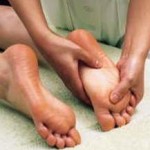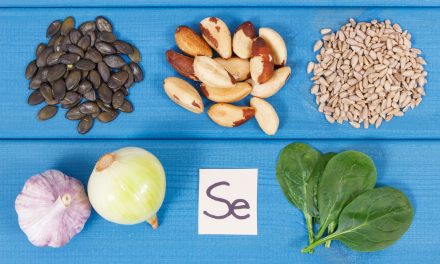 The nerves of your body that are not part of your brain or spinal cord are known as peripheral nerves. When the peripheral nerves are damaged, or not working properly, that is known as neuropathy. A polyneuropathy is a neuropathy pattern that involves both feet or both hands. Another word for this pattern is a Stocking and Glove Neuropathy. Commonly patients feel pain, numbness, tingling, burning, weakness or loss of feeling in the affected area. Many time patients with polyneuropathy do not have any symptoms; in this case the diagnosis is made by a physical examination or a laboratory test (electromyography (EMG) and nerve conduction velocity test (NCV)). Neuropathy is a problem that is commonly experienced by diabetics.
The nerves of your body that are not part of your brain or spinal cord are known as peripheral nerves. When the peripheral nerves are damaged, or not working properly, that is known as neuropathy. A polyneuropathy is a neuropathy pattern that involves both feet or both hands. Another word for this pattern is a Stocking and Glove Neuropathy. Commonly patients feel pain, numbness, tingling, burning, weakness or loss of feeling in the affected area. Many time patients with polyneuropathy do not have any symptoms; in this case the diagnosis is made by a physical examination or a laboratory test (electromyography (EMG) and nerve conduction velocity test (NCV)). Neuropathy is a problem that is commonly experienced by diabetics.
A randomized, double-blind, placebo-controlled study was published in Zhonghua Yi Xue Za Zhi. (2007 Oct 16;87(38):2706-9); it looked at the affect supplementation with alpha-lipoic acid had on diabetic polyneuropathy. The subjects of the study were 460 diabetic patients with mild to moderate distal symettric sensorimotor polyneuropathy. For a period of four years they were given either a placebo or 600 mg/day of alpha-lipoic acid.
Before and 7 and 14 days after the management fasting glucose (FPG), fasting insulin (FINS), supersensitive C reactive protein (sCRP), and HbA1c were measured, and total symptom score (TSS) and Michigan neuropathy screening instrument (MNSI) were used to evaluate the nervous symptoms.
50 cases of the treatment group and 43 control cases completed the study. Compared with the control group, the TSS of the treatment group reduced significantly after 1 week, but the MNSI score did not change significantly. The TSS 7d after ALA administration of the treatment group was significantly lower than that before the ALA treatment in the same group and that of the control group 7 days after the radix salviae infusion as well (both P < 0.05). The TSS and MNSI score 14 days after the management of the treatment group were significantly lower than those of the control group (both P < 0.01). The symptom scores of numbness, sting sensation, and burning sensation reduced significantly 2-weeks after ALA treatment, but there were no significant differences in these symptoms after the management in the control group. The total gratification rate of the treatment group was 90% (45/50), significantly higher than hat of the control group (13.95%, 6/43, P < 0.01). One patient of the 50 patients receiving ALA treatment felt chest distress 2 days after ALA administration, but the symptom was improved in the same day after the velocity of intravenous drip was slowed down, and no other adverse effects were found in these two groups.
Another study, appearing in Exp Neurol. 2008 Dec;214(2):276-84. Epub 2008 Sep 9, found that alpha lipoic acid reduced nerve damage after chemotherapy. A review of studies appearing in Diabetes Educ. 2007 Jan-Feb;33(1):111-7, found that alpha lipoic acid was effective in treating diabetic neruopathy. Other research appearing in Diabetes. 1997 Sep;46 Suppl 2:S62-6, found “…intravenous treatment with alpha-lipoic acid (600 mg/day) over 3 weeks is safe and effective in reducing symptoms of diabetic peripheral neuropathy, and oral treatment with 800 mg/day for 4 months may improve cardiac autonomic dysfunction in NIDDM (type 2 diabetes).”




